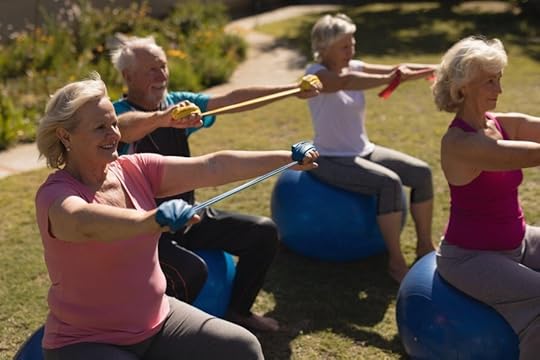Building Strength and Alignment with Bones for Life

Maintaining strong bones and proper alignment is essential for overall health, especially as we age. A resilient skeletal structure supports daily activities, reduces the risk of injury, and promotes better posture. The Bones for Life program offers a unique approach to strengthening bones and improving body alignment through mindful movement and education.
To find out more about Future Life Now, explore how their resources integrate innovative methods like Bones for Life into a broader framework of health and well-being. This program emphasizes gentle, functional exercises designed to promote bone density and restore natural alignment, making it a transformative tool for anyone seeking to enhance their physical health.
Understanding Bones for LifeBones for Life is a movement-based program rooted in the Feldenkrais Method. Developed by Ruthy Alon, it aims to stimulate bone health, improve posture, and optimize coordination through safe and mindful practices. The exercises focus on functional movements that mimic natural activities like walking, standing, and reaching, all designed to reinforce the skeletal system’s strength.
The program uses weight-bearing movements, gentle resistance, and alignment awareness to address common concerns such as osteoporosis, poor posture, and joint discomfort. Unlike high-impact exercises, Bones for Life emphasizes safety and adaptability, making it suitable for many individuals.
Why Bone Health MattersBones are dynamic structures that constantly regenerate. However, factors like aging, inactivity, and poor diet can lead to a decline in bone density, increasing the risk of fractures and osteoporosis. Proper alignment is equally important, as it helps distribute weight evenly across the body, reducing strain on joints and muscles.
The Bones for Life program targets these issues by encouraging the natural rhythms and patterns of movement that strengthen bones and improve alignment without causing undue stress.
Benefits of Bones for LifeParticipants often experience a variety of benefits, including:
Improved bone density: Weight-bearing movements stimulate the regeneration of bone tissue.Enhanced posture: Exercises encourage upright alignment, reducing the strain caused by poor posture.Better balance and coordination: Functional movements improve stability and reduce the risk of falls.Relief from joint discomfort: Gentle practices ease tension and promote fluid motion.Increased energy: Efficient movement patterns minimize fatigue and enhance vitality.Key Principles of Bones for Life1. Weight-Bearing EfficiencyBone health thrives on dynamic pressure. Bones for Life incorporates safe weight-bearing exercises that mimic natural activities, ensuring they are effective yet gentle on the body.
2. Functional MovementThe program prioritizes movements relevant to daily life, such as walking or lifting, helping participants effortlessly integrate these practices into their routines.
3. Alignment AwarenessProper alignment minimizes wear and tear on joints and muscles. This principle ensures that movements are safe and sustainable.
4. Rhythmic MotionThe exercises use rhythm to encourage fluid, harmonious motion, which helps engage the skeletal system healthily and naturally.
Who Can Benefit from Bones for Life?This program caters to a broad audience, from those managing chronic conditions to individuals looking to maintain bone health as they age. It’s especially valuable for:
People with low bone density or osteoporosis seek non-invasive solutions.Individuals recovering from injuries who need gentle, therapeutic movement.Active adults wanting to prevent future skeletal issues.Older adults aiming to enhance mobility and reduce fall risk.Anyone interested in improving posture and alignment for a better quality of life.Practical Exercises in Bones for LifeExamples of exercises include:
Walking with resistance: Using a scarf or elastic band to simulate weight-bearing pressure.Rolling patterns: Gentle, rhythmic rolling to stimulate alignment and improve coordination.Alignment practices: Standing and balancing exercises to cultivate awareness of posture.Dynamic sitting: Learning to sit with proper weight distribution and core engagement.Each movement is designed to be accessible, with options to modify for individual needs and abilities.
How to Get Started with Bones for LifeThe program can be practiced through classes led by certified instructors or online resources. Many participants find the guidance of a skilled teacher invaluable for understanding and integrating the principles effectively.
Tips for SuccessStart slowly: Focus on learning the movements thoroughly rather than rushing through them.Stay consistent: Regular practice reinforces positive changes in posture and bone health.Listen to your body: Adapt exercises to your comfort level and progress gradually.Combine with other wellness practices: For optimal results, Pair Bones for Life with a balanced diet and strength training.Empower Your Health Through MovementStrong bones and proper alignment are essential for a healthy, active life. Bones for Life offers a practical, mindful approach to achieving these goals through gentle, practical movements. Whether addressing a specific concern or enhancing overall well-being, this program provides a path to resilience and vitality.
Ready to take the next step? Empower yourself with tools to build strength, improve alignment, and live more efficiently. Start today, and let the benefits unfold.
The post Building Strength and Alignment with Bones for Life appeared first on Geek Mamas .



